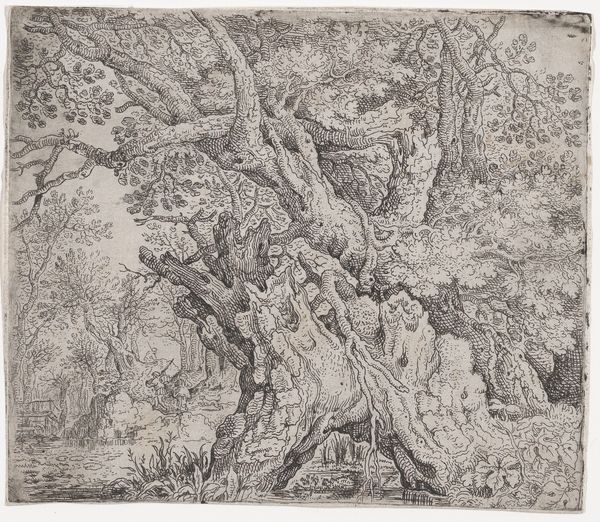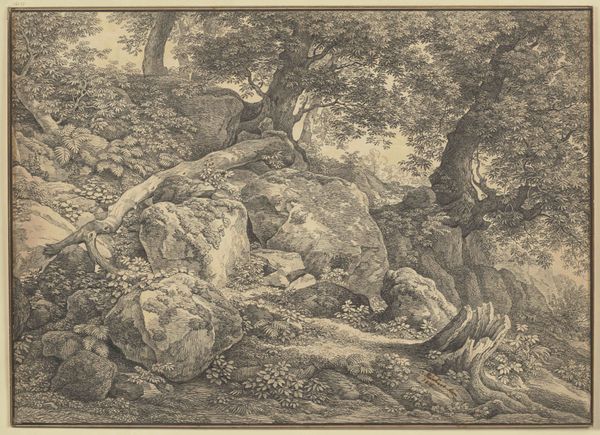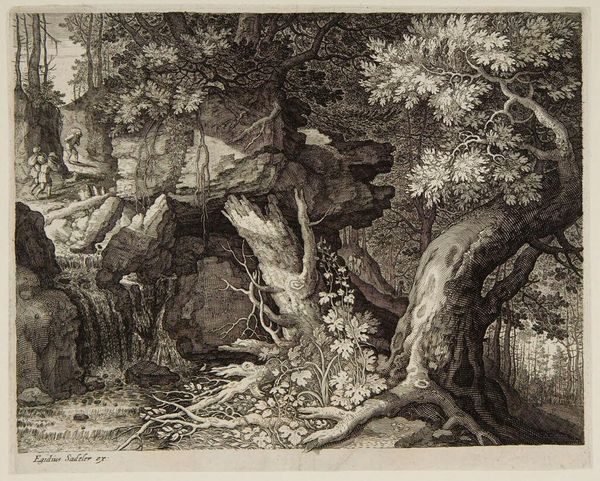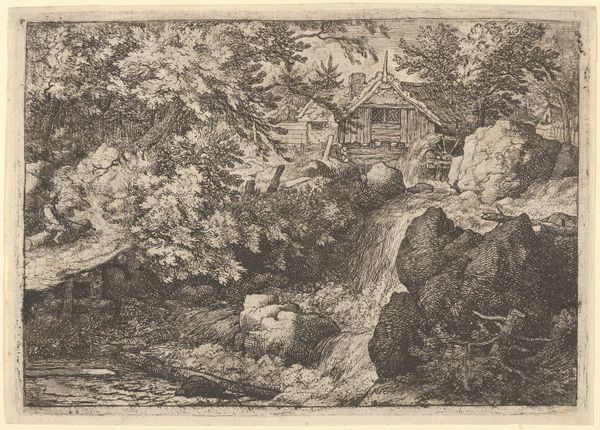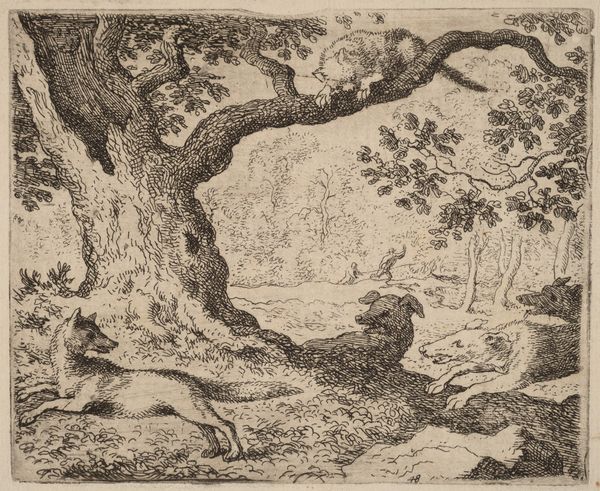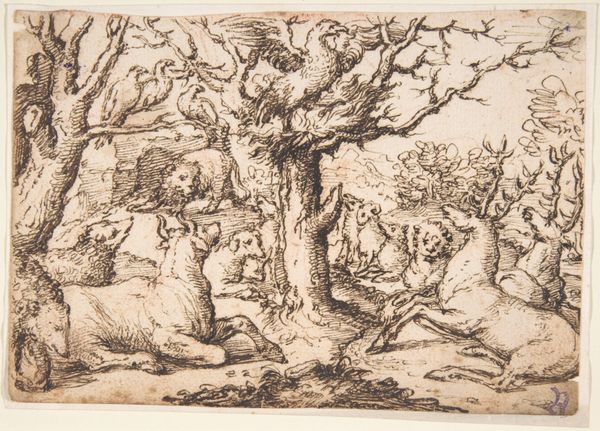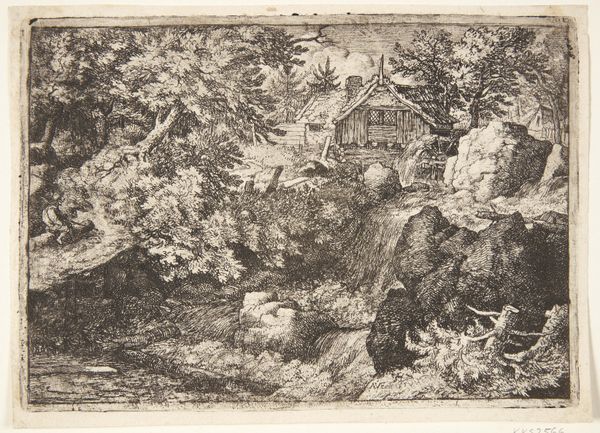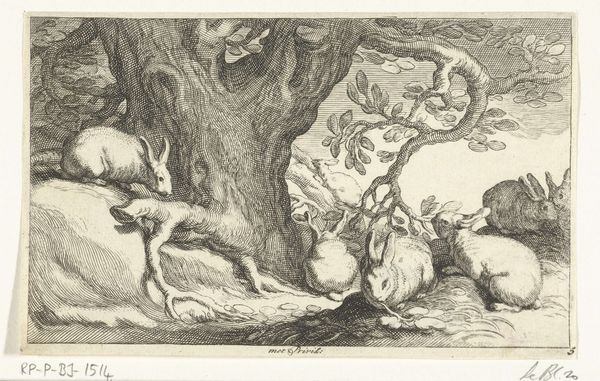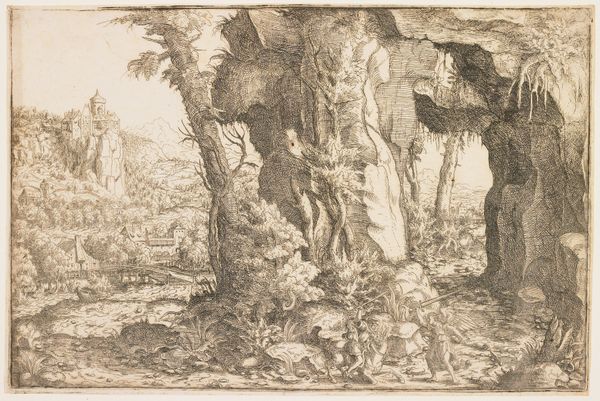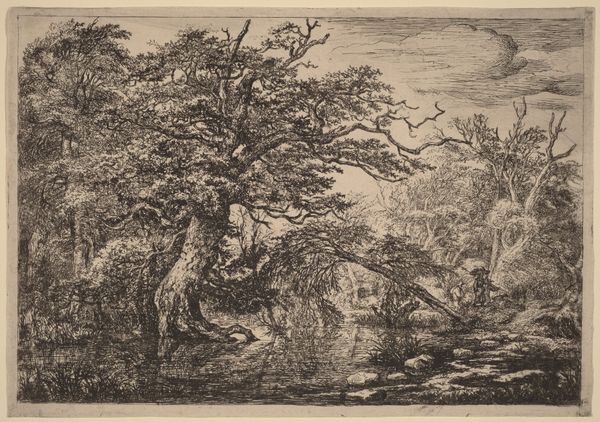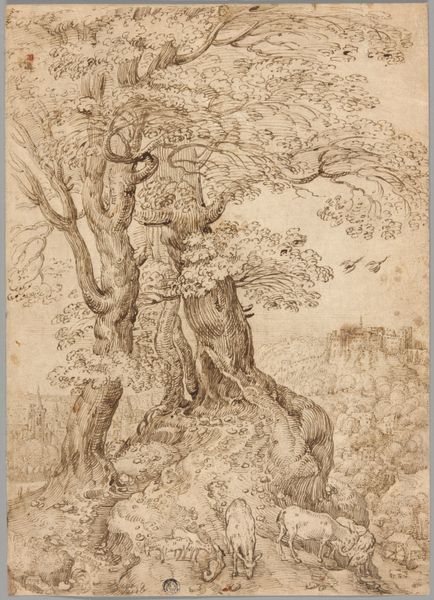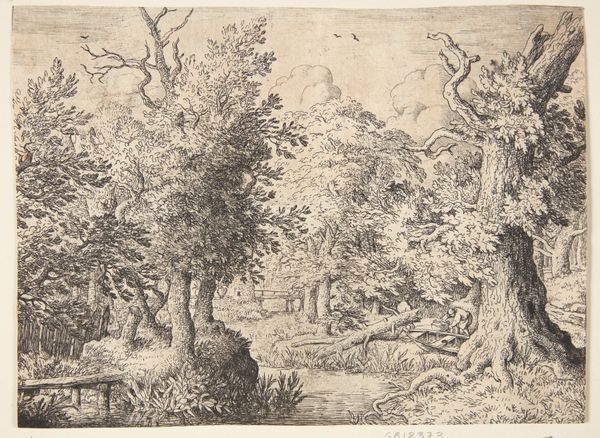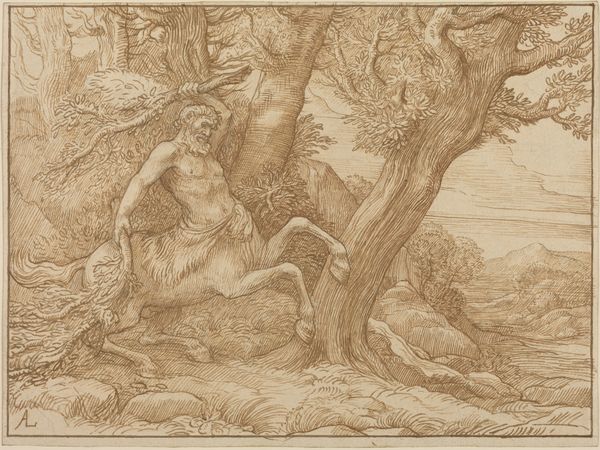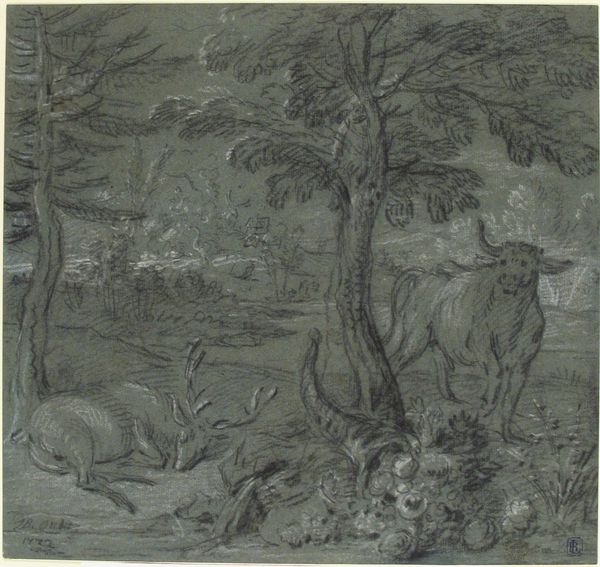
drawing, print, etching, paper
#
drawing
#
dutch-golden-age
# print
#
etching
#
landscape
#
paper
#
oil painting
Dimensions: 112 mm (height) x 147 mm (width) (bladmaal)
Curator: Allaert van Everdingen’s “En skov,” or "A Forest", rendered sometime between 1621 and 1675. It's currently held at the SMK, the National Gallery of Denmark. You see the density achieved using etching, a printmaking technique deploying paper as the substrate. Editor: Oh, wow, there’s a somber fairytale vibe I immediately get here. Very Grimm. The light barely touches anything; the gnarled trees almost seem to be whispering secrets to one another. Curator: The economic considerations inherent in printmaking during the Dutch Golden Age allowed for wider dissemination of landscape imagery, reflecting a growing merchant class interest in nature as both aesthetic and economic resource. Consider the availability of paper at the time; where was the paper manufactured? Who could afford prints? Editor: Right, and you can see the appeal. I mean, this isn't just documentation. The way Van Everdingen has rendered the textures of the bark and the undergrowth…it feels immersive, almost tactile. I can practically smell the damp earth. Plus, is that a figure on horseback further back into the image? Is it a tiny hunter who will succumb to the immensity of the forest? I want to create a fantasy narrative right here, right now. Curator: Indeed. Also consider the technique here. Etching allows for incredibly fine lines, achieving tonal variation through density of marks. How does that relate to labor and artisanal knowledge within the context of seventeenth-century print workshops? Editor: Fair enough. It is kind of awe-inspiring how the image is so detailed for a 'simple' print, that really brings out all the nuances of the composition. Now, seeing how all of it has been printed I imagine there was considerable mastery required to make it happen in the first place. Curator: Indeed. Art historical narratives can move us past the individual genius narrative, to instead focus on materials, production and circulation as central components of aesthetic appreciation. Editor: It is all of this, or even all of those components together that elevate the emotional or perhaps more truthfully, experiential depth.
Comments
No comments
Be the first to comment and join the conversation on the ultimate creative platform.
